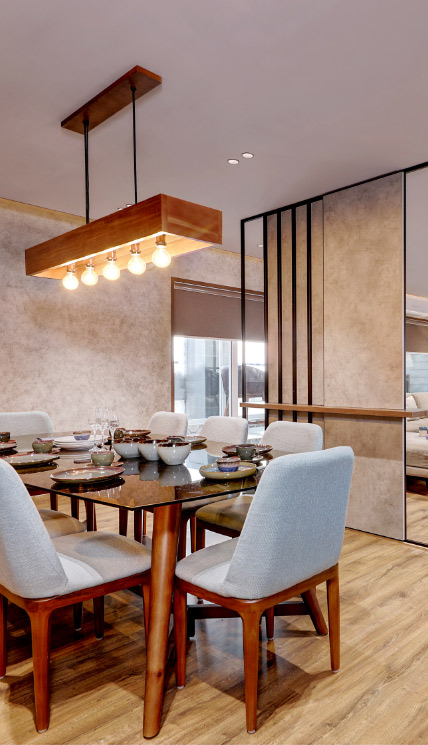Experience luxury interior design to elevate your home or office.
Experience luxury interior design to elevate your home or office.
Blog Article
Transform Your Home With Crucial Concepts of Interior Decoration and Appearances
By understanding the effect of shade theory and the relevance of appearance and patterns, one can develop spaces that are not only aesthetically appealing but also deeply individual. Achieving this balance includes more than simple decor; it encompasses a tactical plan and an eager understanding of how each element connects within a room.
Understanding Color Theory
Understanding the concepts of shade concept permits designers to create areas that resonate psychologically with occupants while meeting useful demands. Each category plays an important duty in establishing harmony within an area.
The psychological effect of colors is profound; warm tones such as reds and oranges evoke power and warmth, while cool tones like blues and eco-friendlies promote peace and tranquility. The usage of corresponding shades enhances aesthetic interest, producing striking contrasts that can elevate an area's appeal.
Neutral shades, on the various other hand, function as a versatile background, enabling various other layout elements to beam. It is important to think about aspects such as lights and the space's function when selecting a color palette, as these can modify the understanding of shades throughout the day.
Inevitably, a well-considered color design can transform a room, promoting a feeling of comfort and style that straightens with the occupants' preferences. Mastery of shade theory is, for that reason, an essential skill for any kind of indoor developer intending to produce unified and welcoming settings.
Accomplishing Equilibrium in Design
Just how can designers achieve a feeling of balance in their spaces? Attaining equilibrium in design is essential to developing unified interiors. Developers can use three primary sorts of balance: balanced, asymmetrical, and radial. In proportion balance involves organizing components evenly around a main point, promoting a sense of order and harmony. This type commonly includes pairs of furnishings or artwork, boosting visual stability.
Asymmetrical equilibrium, on the other hand, relies upon varying aspects that still accomplish a natural look. This technique permits more dynamic and informal arrangements, offering passion while preserving balance. By thoroughly picking varying sizes, shades, and textures, designers can create a visually compelling area that feels well balanced yet energetic.
Radial equilibrium highlights a central centerpiece with components emitting exterior. This style is typically seen in circular designs, where furnishings and decoration produce a cohesive surround that attracts the eye inward.
Inevitably, attaining equilibrium requires thoughtful factor to consider of scale, percentage, and the connections between aspects. miami interior design. By masterfully using these equilibrium concepts, designers can change spaces right into environments that feel both visually pleasing and functionally unified, improving the total experience for passengers
Significance of Spatial Understanding

An eager feeling of spatial recognition allows developers to recognize prime focus within an area, guiding the audience's interest to key features while preserving look here a general sense of unity. It also assists in the calculated placement of lights, which can considerably affect the assumption of space and state of mind. Additionally, understanding spatial partnerships allows the designer to satisfy the certain requirements of residents, guaranteeing that each area serves its desired function without endangering aesthetics.
Eventually, spatial recognition is critical for making the most of the possibility of any kind of interior space. By thoroughly considering the interplay between dimensions, design, and function, designers can develop settings that not only meet practical requirements but likewise evoke a feeling of convenience and appeal, improving the overall living experience.
Including Appearance and Patterns
Embracing a diverse series of appearances and patterns can substantially improve the aesthetic and responsive charm of an interior area. The critical usage of different materials-- such as wood, steel, textile, and rock-- produces deepness and passion, making a room really feel extra welcoming and dynamic. For circumstances, integrating smooth surface areas with rough textures can establish a balance that draws the eye and involves the detects.
When incorporating patterns, consider both scale and rep. Large patterns can work as prime focus, while smaller, refined layouts can complement various other elements without frustrating the space. Layering patterns, such as pairing flower pillows with striped tosses, adds intricacy and a sense of consistency if implemented attentively.
It is also crucial to keep a cohesive shade scheme, making certain that textures and patterns collaborate instead of contend for attention. By selecting a couple of essential appearances and patterns, you can create a merged visual that mirrors your personal style while improving the overall atmosphere of the area. Ultimately, the careful unification of these elements can change an ordinary website here space right into an innovative setting abundant with character and warmth.
Individualizing Your Space
Developing a space that mirrors your individuality is important to attaining a really welcoming setting. Personalization in indoor style enables you to instill your one-of-a-kind style and passions into your home, changing it from a mere shelter right into a refuge that talks with who you are. Begin by selecting a color palette that reverberates with your emotions-- vibrant hues can energize, while soft tones provide peace.
Integrate artwork and style that reflect your interests, whether it be traveling, nature, or abstract principles. Showing personal collections, such as publications, photos, or keepsakes, can evoke cherished memories and develop prime focus within a space. Additionally, think about tailoring functional items, like upholstered furniture, to straighten with your aesthetic preferences.

Final Thought
In verdict, the change of a home with the essential principles of interior decoration and aesthetics requires a detailed understanding of shade concept, balance, spatial awareness, structure, and customization. Each element contributes considerably to producing an unified and useful living setting - miami luxury interior design. By attentively incorporating these principles, people can boost the aesthetic allure and psychological vibration of their rooms, ultimately fostering a home that reflects unique identities while offering comfort and practicality
Report this page